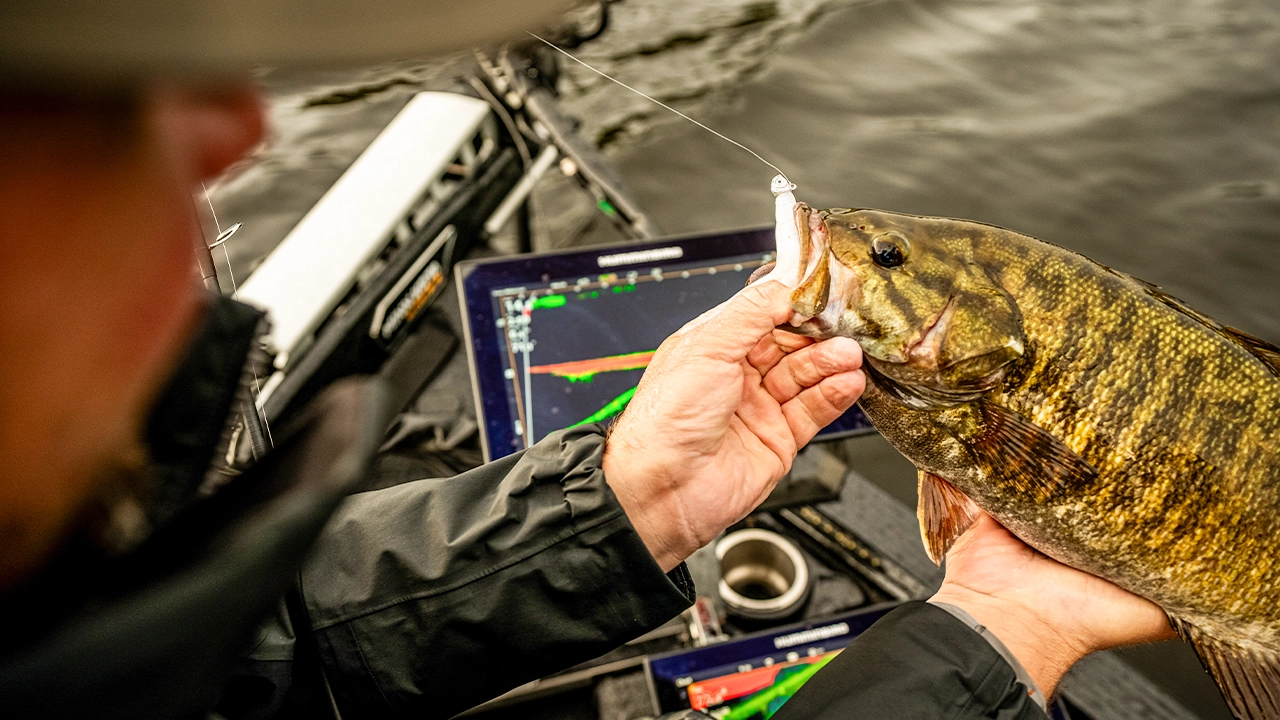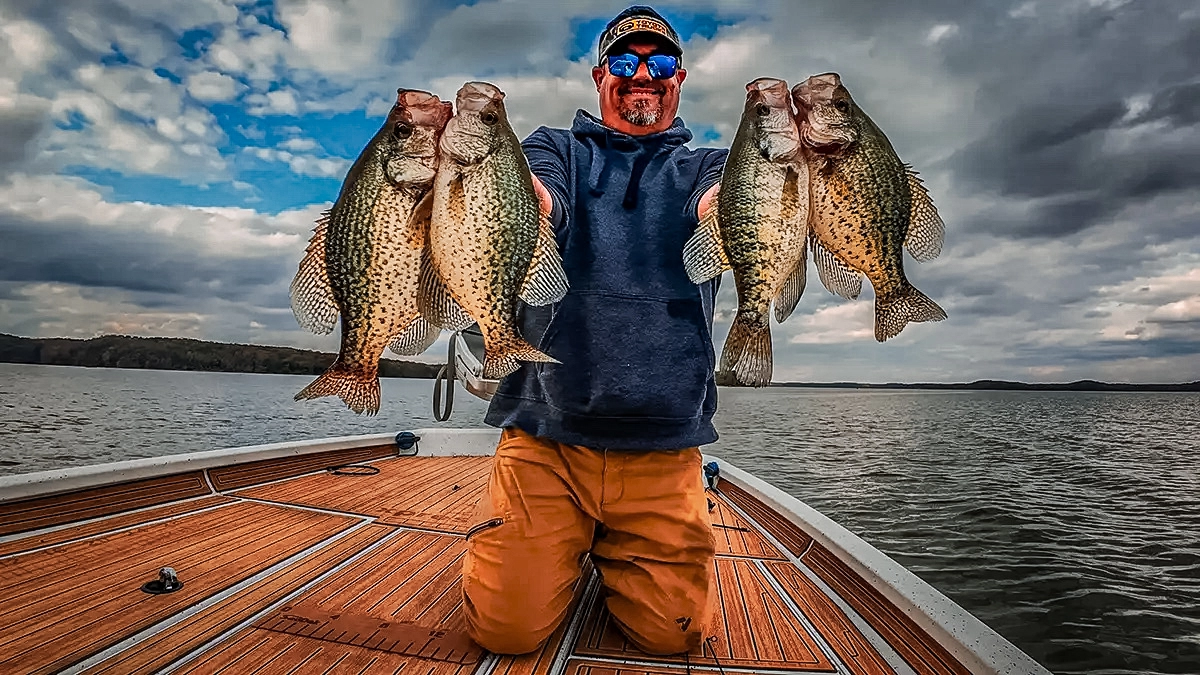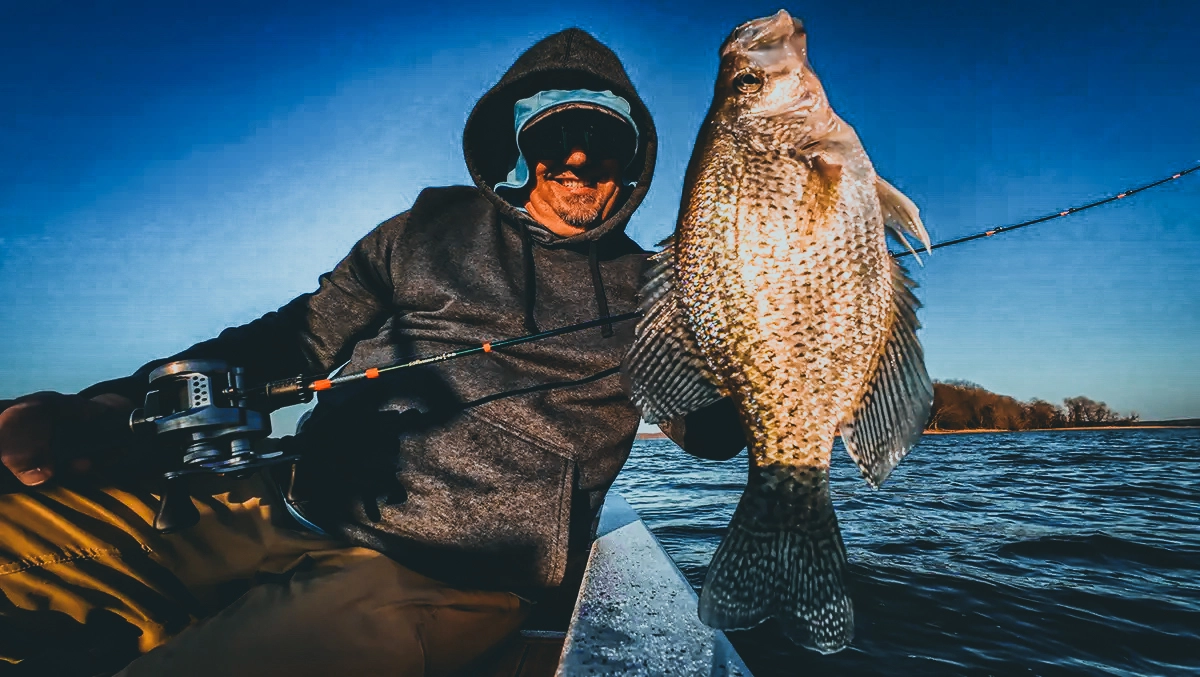I love fall fishing. I really can’t emphasize how good fall fishing can be or how often it is overlooked — especially going after big schools of crappie. One of my favorite things to do is hunt schools of black crappie in the fall, and I’ve had a lot of success.
Chasing big schools takes some time and effort, but once you find a good one, you can fish for them for a few weeks in the same general area so long as there is no significant weather event like a flood or snowstorm that would cause the fish to move on to their winter holes and patterns. It’s simply a matter of understanding the migration highway and finding them while foraging before the deep cold of winter sets in.
Last year, I probably got more emails and messages about finding black crappie in the fall than any of my other fishing pursuits. So, here are a bunch of tips I’ve learned over the years that I hope help others enjoy my favorite kind of fishing on their favorite lakes.
Finding Areas with Bait

The most important ingredient here is baitfish. The crappie are ganging up to feed before the water gets really cold and they slow down a lot. These schools will last well into the winter, it just gets harder to make them bite as it gets colder and colder. You go from casting, winding, and reeling one in every cast, to winter when you’re holding a jig on their nose for minutes at a time just to get a bite.
Baitfish can be extremely abundant in the fall, and looking for bait in a sea of bait can seem silly at first. But if you can find a few other things in a relatively small area, then you can usually hone in on a school foraging on baitfish balls.
If you can find bait along a creek channel where there is some shade, cover, or other variables to make the area a little better, you can find schools. Crappie use creek channels to move off the main lake and into bays and creek arms to migrate shallow to feed in the fall. Later, they will use them again to move back to the main lake for winter. However, I’ve found instead of looking for cover along these migration routes, I find schools more consistently if I focus on where the creeks make a change and swing in and out from the bank.
Finding Deep Water Swings

A “channel swing” is an area where a creek channel winds through a bay, or arm, and swings up close to a bank for a stretch before swinging back out towards the middle of the bay. I call the places where the channel “swings” in and out the “pit stops,” because that’s what they are for foraging fish.
It’s simply an easy way for fish to migrate along a creek channel and then run up on a flatter feeding area for a bit, and then slide back out. Sometimes they will herd the bait out of these flatter swings and banks and push them back out into the channel, but generally speaking, you are fishing the area more than the real contours.
The crappie may be suspended on the deepest part of the channel, pushing a school of bait up toward the surface or down toward the bottom. One interesting thing about crappie is they don’t always feed up as folks tend to believe. Often, they pressure baitfish into balls where they can easily move in and out of them to feed. Two years ago, I found the biggest and best school of black crappie I’d ever come across, and they had the baitfish pinned to the bottom.
I caught seven of the biggest black crappie I had ever caught in seven casts by pitching my jig and letting it sink right into the school of bait at the bottom. Then, I’d slowly raise it up out of the bait, and a crappie would clobber it. That’s where they were sitting, above the bait, waiting for a minnow to break off from the pack. And when my bait did just that, they scarfed it up seven times out of seven.
My Baits of Choice

I keep my crappie fishing simple for the most part. I have a lot of soft plastics and jigs that I like, but day-in and day-out, I like a 1/16-ounce jighead and some sort of plastic that has some movement on the tail. Some days, a curly tail is great; some days, a straight tail is better.
Typically, when the water is in the mid- to high-50s, a paddle tail swimbait or curly tail grub is good. As temps get into the low 50s and colder, a straight tail that just subtly vibrates as you reel it looks more like a naturally cold baitfish.
Color
I stick close to shad colors. Some chartreuse is never bad, in my opinion. And some days, a wild color works pretty well if you are competing with a lot of bait, but generally I stick to a lot of chartreuse and white, monkey milk, shonuff, baitfish, silver rainbow, and colors like that when hunting schools of crappie.
Specifically, I like Crappie Magnets, Bobby Garland Baby Shads, Mr. Crappie Slabalicious, and Z-Man Shad FryZ or Micro Goats for most of my black crappie school hunting. When the water gets colder you can go down in size or fish more vertically.
Refining Your Setup and Approach

Because crappie move with the bait, you often have to adjust your angles, your distance from the fish, and the speed of your retrieve. When you first pull up on a school it’s, generally speaking, pretty dang easy. Cast, let your jig sink into the school, and then wind it slowly back until your line jumps.
After you’ve picked off several fish, the school will start “pulling” or “pushing,” which means as you hook fish that go a little wild in a fight, it will either draw the school closer to your boat, or push the school farther off.
If you do that enough times in a short enough window, you can break up the school. I will often hook a fish and move myself away from the school and play the fish in. Then, I’ll turn and line back up on where I was casting and go again. This also ensures I don’t blow up on the school while I’m messing with my hooked fish.
You can systematically cast and reel at various angles and depths to dial in the best lineup. I often drive over areas one time to note the depth of baitfish and schools of crappie if I can see them. Then, I’ll start counting my jigs down to their level. Often, fishing my jigs at the same level as the bait I saw would yield crappie.
Sometimes, the school is actually a lot of small wolf packs, or they are mixed in with the bait, which can make them harder to see on electronics.

Relocating Fall Black Crappie Schools Later
When you find one of these big schools of black crappie in the fall and winter, they will generally stay in the general area for a while as long as the baitfish don’t make a big migration. But, you will often have to hunt them a bit in your general area each day as they roam, mostly because the baitfish are being attacked and don’t sit still much.
I’ve found them 500 yards away from where they were a couple days before, but still in the same general area. It’s also why I like those swing areas; for some reason, when I find them on a swing area, they will just move up and down the swing and stay local to that for a while. I had one school on a swing for seven weeks before they finally moved on to somewhere deeper as it got really cold.
Final Thoughts
White crappie also group, but they are often smaller groups and almost always related to brush. Black crappie, however, can be found in very large schools of several hundred fish, and they will relate to things like structure, current, shade, and things of that nature, much like bass and walleye. So, I specifically hunt those bigger black crappie schools because they are more relatable to the old bass fisherman mentality ingrained in me.
I hope you will get out and hunt schools of crappie like this in the fall and winter. It can take some time to find your first school, but when you do, you will be hooked just like me.











